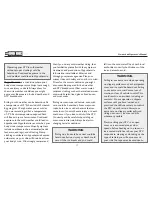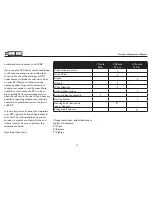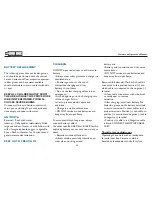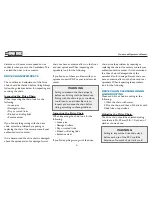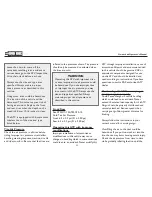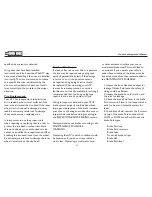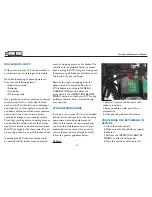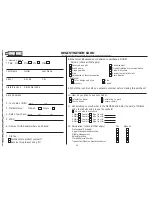
2010
Owner and Operator’s Manual
16
100 % ELECTRIC RANCH-HAND ATV
RIDING THROUGH WATER
You can ride the ATV through shallow water.
Make sure it is not more than 4 inches deep
and is not moving fast. Choose a good place
to cross before you ride through the water.
Look for a spot where the banks are gently
sloped on both sides and the bottom of the
stream is hard. If you are unfamiliar with the
area, park the ATV and inspect the stream
first to find a suitable spot for crossing. When
crossing, operate the ATV at a slow, steady
speed. Be careful not to
amage banks when crossing.
Operating the ATV in water, sand, or mud
causes rapid brake wear. Excessive brake
wear could cause the brakes to be less
effective. After repeated operation of the
ATV in these conditions, bring it to your
authorized service center to have the brakes
inspected and cleaned.
RIDING IN COLD WEATHER
Pre-ride Inspection
Check that the throttle and all control levers
move freely. Make sure that the footrests are
free of ice or snow.
Move the ATV forward and backward to
check that the wheels roll freely. If you
cannot move the ATV, the tires may be frozen
to the ground, or the brakes may be frozen
to the wheels. If the tires are frozen to the
ground, pour warm water around them to
melt the ice. If the brakes are frozen, bring
the ATV to a warmer area to thaw out the
brakes. After the motor has been started,
check the brakes. Do this inspection on level
ground and do not exceed the walking speed.
Be sure to check the operation of both front
and rear brakes. If the brakes do not work
adequately, stop riding the ATV. Bring the
ATV to a warmer area to allow the brakes
to thaw out. After the brakes thaw, dry them
by applying them several times before riding.
If the brakes do not regain full stopping
power, ask your authorized service center
to check them before you continue riding
your ATV. Water that enters the brakes may
freeze after you park your ATV. The frozen
water can prevent wheels from turning or
the brakes from working. After riding through
water, mud, snow or slush, it is important
to dry the brakes before parking the ATV.
To dry the brakes, apply them several times
while riding slowly. Before your next ride, be
sure to do a Pre-ride inspection as described
earlier in this section.
WARNING
Operating the ATV without a properly
functioning brake system could be
hazardous. Wet or frozen brakes will
increase stopping distance. This will
increase your chance of having an
accident. Be sure to inspect the brakes
before riding the vehicle in cold weather
as described above.
CAUTION
Using motor power to free up frozen
wheels could damage your ATV. Severe
damage to the drive train may occur if
you use motor power to free frozen
wheels. Before riding, manually move
the ATV forward and backward to make
certain that all wheels roll freely.
















